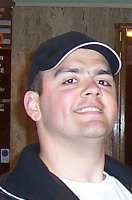Research interests:
- HCI - Human-Computer Interaction
- UI - User Interfaces
- CG - Computer Graphics
- AR - Augmented Reality
- AI - Artificial Intelligence
Project involvement
Abstract:
Fly is the concept map version of PowerPoint. It lets you give a computer-based presentation in which your individual slides are organized into a large concept map. During your presentation, you and your audience travel visually along this graphical map, rather than seeing one slide pop up after the other. This makes it easier for your listeners to follow your presentation and later remember what you presented, and it also makes it easier for you to create and structure your presentation.
This project can serve to address the following research questions:
- Does presenting in this form measurably increase how much the audience remembers from a given topic?
- How do people visually parse concept maps, or directed acyclic graphs in general?
- What rules from traditional film theory and cognitive psychology, in particular visual movement, can be adopted to the navigation in such a system to maximize its didactic effects and at the same time minimize cognitive load and possible visual confusion?
- Are there new, specific rendering techniques to optimize the display performance of such an application?
Side projects
- Self Adjusting User Interfaces: Eliminating the need for Tutorials
- Finder Plug-In: Visualization of the sorting criteria
- Computer: A new gossip pal
- Outer Desktop: Taking the file system into outter space
- WormHole Video Conference: Making people feel like fish in an aquarium
- Virtual Psychiatrist: Much cheaper
Pedja enjoys playing football and basketball, reading Dan Brown books over and over again and he requires an inevitable shot of minimum one Friends episode per evening. In addition he started collecting stamps and at the moment is concentrating only on very old Serbian stamps.
More information about Pedja: www.Stojadinovic.net.


